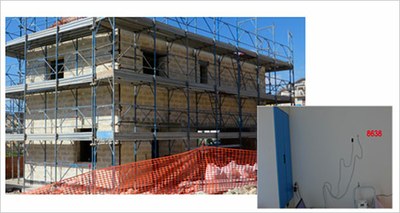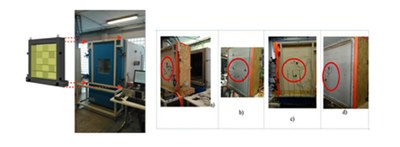Building sector: The “bio-brick" avoids the need for air conditioning
17/10/2019
 A "bio-brick" in a composite material ideal for our climate, capable of maintaining an average indoor temperature of 26 degrees during heat, avoiding the need for air conditioning. It’s one of the results of the study conducted by ENEA and Politecnico di Milano as part of the project "Energy requalification of existing public buildings: nZEB direction", funded by the Electrical System Research of the Ministry of Economic Development.
A "bio-brick" in a composite material ideal for our climate, capable of maintaining an average indoor temperature of 26 degrees during heat, avoiding the need for air conditioning. It’s one of the results of the study conducted by ENEA and Politecnico di Milano as part of the project "Energy requalification of existing public buildings: nZEB direction", funded by the Electrical System Research of the Ministry of Economic Development.
Made from a mixture of lime and shives, a woody waste material from from hemp, it combines low environmental impact, high energy performance, transpirability, excellent insulating properties, protection from humidity and comfort. In addition to the assessment of the environmental performance of the "bio-brick" through the analysis of its life cycle (LCA), the researchers first carried out laboratory tests in a climatic chamber at 23 ° and 35 ° and successively an "in situ" measurement campaign , in Sicily and Veneto, on buildings made with the same technologies.
Building and upgrading the national building stock in a green perspective could improve energy efficiency in the building sector in countries with a warm temperate climate, characterized by high energy needs in summer, saving 50% of energy. Buildings play a key role as they are responsible for much of the national energy consumption. according to ENEA studies, in fact, energy consumption of homes in Italy accounts for 45% of CO2 emissions."Overall, the study draws a very positive environmental balance with regard to the carbon footprint: in practice, the wall in lime hemp blocks works as a system capable of removing CO2 from the atmosphere and store it for a sufficiently long time", Giovanni Dotelli of the Milan Polytechnic, pointed out.
“Furthermore, the first experimental data shows a good thermohygrometric performance of the wall which, regardless of external humidity and temperature fluctuations, presents constant internal values, without the use of air conditioners and for the entire measurement period conducted in the hottest months ”, Patrizia Aversa at the ENEA Brindisi Research Center said.
In order to define and calibrate mathematical models capable of predicting the thermohygrometric behavior of buildings in real climatic conditions, the results of the experimentation were then compared with those obtained through numerical simulations.
"For the Italian building market, the introduction of energy regulations [1] has been a strong incentive to innovate materials and components to guarantee higher performance in line with the new standards", Vincenza Luprano, researcher at the ENEA Brindisi Research Center, explained.
"Hemp is a natural material and its agricultural by-products play an important role in the creation of new supply chains -also encouraged by national laws- due to its wide availability and the low impact of its production cycle on the environment, in a circular economy perspective ", Luprano said.
The results of this research were recently presented at the international conference Resilient Built Environment for Sustainable Mediterranean Countries (SBE 2019) organized by the Milan Polytechnic in collaboration with the international organizations International Council for Research and Innovation in Building and Construction (CIB), International Initiative for a Sustainable Built Environment (IISBE), the United Nations Environment Program (UNEnvironment) and the International Federation of Consulting Engineers (FIDIC).
For more information please contact:
Vincenza Luprano – ENEA , Brindisi Research Center - Laboratory of Functional Materials and Technologies for Sustainable Applications

